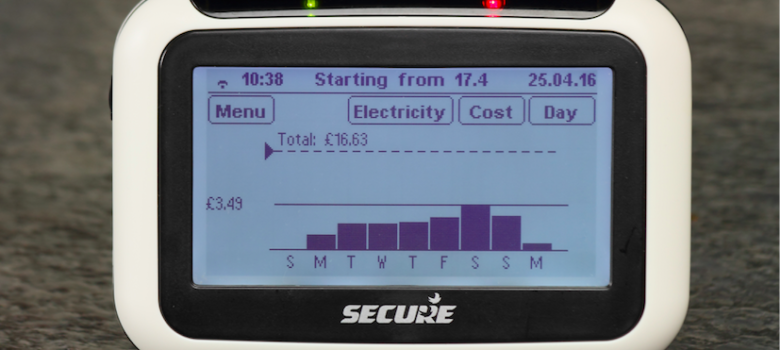
Time of use tariffs are a new concept, designed to incentivise customers to use more energy at off-peak times, in order to balance demand. These tariffs charge cheaper rates at certain times of night or day, when demand is at its lowest, and higher rates at popular times. The benefits are two-fold: demand is managed and customers can lower their bills.
Why have time of use tariffs been introduced?
In terms of energy generation, the UK’s future is uncertain. Closing coal power plants to help meet the country’s carbon reduction targets has had a big impact on the amounts of energy the UK is able to generate. With very little investment in other forms of energy, such as renewable sources, experts are predicting energy shortages in the years to come. Time of use tariffs could have a big role to play in reducing demand, and therefore lessening the pressure on UK energy infrastructure.
How are time of use tariffs different from Economy 7?
Some people might wonder how this is different to Economy 7. Economy 7 was introduced to encourage people to charge storage heaters at night, using electricity that would otherwise be wasted. Coal and nuclear plants – which the UK has traditionally drawn most of its power from – cannot be turned off at night, and are therefore inefficient unless people use this electricity.
- The big difference with Economy 7 is that it only has one cheap rate, at night. Time of use tariffs have several different rates, increasing the potential amount of energy and money that can be saved.
- Something else to take into account is that Economy 7 is not expected to be offered for much longer, as the coal plants it was designed to work alongside are being decommissioned.
- The only form of heating that works with Economy 7 is storage heaters (which are inefficient and difficult to use), whereas any form of heating or appliance can be run on a time of use tariff.
Do I need a smart meter for a time of use tariff?
Yes! A smart meter gives you real-time information on how much energy you are using, and sends it automatically to your energy provider. If you don’t have a smart meter, they can’t know when you are using your energy, and therefore how much to charge you for it.
A national rollout is now underway, with every household that doesn’t opt out expected to have one by 2020. Energy companies install them free of charge and
There are other benefits of smart meters, because you can track your costs as you go, meaning no nasty surprises when your bills come through at the end of the month. There are no more estimated bills, so you won’t be overcharged. You also no longer have to send readings yourself.
How many time of use tariffs are available?
At the moment, there is only one – Green Energy UK’s ‘Tide’ tariff. Green Energy UK is somewhat of a pioneer these days, with 100% of their energy generated from renewable sources, and their tariff leading the way in terms of encouraging demand balancing.
Once smart meters have been installed in the majority of homes, most energy companies are expected to start offering the new tariffs.
How much money could I save on a time of use tariff?
Quite a lot, if you use it cleverly. Let us explain – Green Energy UK’s ‘Tide’ tariff, for instance, offers electricity at 20p cheaper per unit overnight. With the average hourly electricity rate in the UK currently around 12p, the 4.99p rate offered between the hours of 11pm and 6am each night is pretty tempting! You may wonder what the point is in offering electricity while everyone’s in bed. Well, it’s up to people to change their habits! Clearly, people are always going to need to use the washing machine during the day at certain times, but you could start trying to do the bulk of your washing at night. The same goes with running dishwashers, bread machines etc.. You get the picture!
Time of use tariffs – the future
All in all, time of use tariffs are a pretty big development – they mean lower bills for customers and less pressure on UK infrastructure. People running their most power-hungry appliances at night could really lessen strain on the National Grid. Reducing power surges will avoid blackouts and hopefully ensure a constant supply of energy, at a point where the future of energy supply in the UK is looking a bit shaky.
Something that could greatly affect the way people use time of use tariffs is the ongoing development of battery storage technology. Home battery storage systems help manage demand by making people less reliant on national energy supplies. Until recently, these systems have been the preserve of people with home renewables, wanting to store the energy they generated to use at a later time. The introduction of time of use tariffs mean these systems could now be worthwhile for anyone. Those on these tariffs can maximise savings by charging batteries with electricity at the cheap times of day, and then use it later on, whenever they need it. This could potentially save people hundreds of pounds per year.
Benefits
- Potentially cheaper bills for customers
- The resulting demand-balancing reduces strain on the UK’s energy supplies
Limitations
- Currently, only one energy supplier offers this kind of tariff.
- Requires small behavioural changes from the consumer in order to save money.













I am interested in time of use tariff since we have just installed a Powervault in our home. We have coupled this with our 4kWh solar system and thus far it seems to be working well. However is there a way that I could pull electricity from the grid at night to charge this? Then I would have the solar producing most of my evening electricity. This would discharge the battery by say 10pm in the evening and then I could use a timer to recharge the battery over night, so come the morning it is full again and then the battery would recharge during the day time. It seems a really good set up = and almost makes me dependant from the grid.
Never heard of PowerVault. What is it? Liquid crystal as Fischer manufacture?
PowerVault can definitely pull from the grid for you. You can find the settings for this on your online portal.
This article seems to imply that Time of use tariffs are mainly to be offered at night. But apart from conventional base-load supply, that is consistent such as nuclear, the future will presumably increasingly see more electricity available from, say, solar. This surely suggests that the ‘off-peak’ period will shift and the cheapest supply might frequently be during the day. Also, with limited (so far) plans for much nuclear to replace coal, it might be the conventional fan storage radiator controlled by a room presence sensor and a timer and room thermostat that might be the optimum for old or disadvantaged consumers. Also manual selection of the time of use of appliances, instantaneous heating etc may well be beyond the capability of many elderly and infirm to achieve. There are more ways of killing a cat than drowning it. (Apologies to sensitive cat lovers.)
In an old first floor flat , it is not possible to run my washing machines at night, because of complaints from neighbours about noise and advice from the fire brigade to not leave washing machines running while unattended. Neither do I wish to clean at night or cook at night. So how will time of use tariff help me when the only things I can run at night are room heating and water. Furthermore night storage heating requires me to second guess the weather which is difficult when I spend part of the week in a different part of the country.
How will a consumer know that a monthly bill is correct if they do not have a recording device to record the duration of the many different charging periods he has chosen?
December 2018… Green Energy’s Tide Tariff isn’t the only TOU Tariff…Octopus Energy have their Agile Tariff which on rare occasions actually pays you to use electricity. I’m trying it out with a Tesla Powerwall 2, and 3kW of PVs. I’ve also ditched the old storage radiators and installed Electrorad Aeroflow radiators. No gas here…
There have been quite a few hiccoughs getting the system up and running. After a few months it turned out I wasn’t on Agile after all and it was the wrong type of smart meter – the old Economy 7 meter circuit was suddenly back in action and the heating didn’t work. This was sorted speedily.
Octopus publish the half-hourly price of electricity for the next day (actually, irritatingly, 23 of the 24 hours of prices – it stops short at 2300hrs, I’m not sure why)… I check the prices daily to tweak the time I charge the Powerwall and run the immersion heater. This is quite a commitment! I’d hoped to automate this with an app… but I’m unaware, to date, of any that could be linked to the electricity price. The radiators are WiFi controllable but again getting everything to communicate with the electricity price, ambient temperature, weather forecast… isn’t yet possible.
I’m not finding the Agile Tariff is saving me money, as far as I can establish (teething troubles notwithstanding), if anything it’s costing us more, however, the house is more comfortable with the Aeroflow radiators, the storage radiators were pretty useless by the evening. Our electricity needs from the grid we’re minimal between April and September.
I’ve invested a considerable sum in an attempt to be considerate to the environment, it will take a long time to recoup the investment, if indeed we ever do!
I use Octopus for Electricity and Gas, however they say they can’t connect with a smartmeter (Ihave one that was installed by Eon) so I have to submit regular meter readings. How does this compare with your Agile tariff experience and does it include gas?
Octopus Agile is compatible with IFTTT, so you can, in principle at least, automate devices to respond to market prices. Which is why there are all these IFTTT routines to help you do so.
What about Octopus Energy time of use tariff?
I’m very interested in very cheap off peak electric 00:00-06:00 would be amazing but even 3 hours of very cheap electric would be great. But it’s for my B&B that has a commercial contract. Nobody seams to offer these kind of contracts for commercial property’s.
If there is such a deal I’d be very happy to find out about it.
I am looking at installing a battery storage system to enable me to store energy during off peak periods and then use batteries during peak periods I.e only draw from grid during off peak. What sort of savings could I expect.